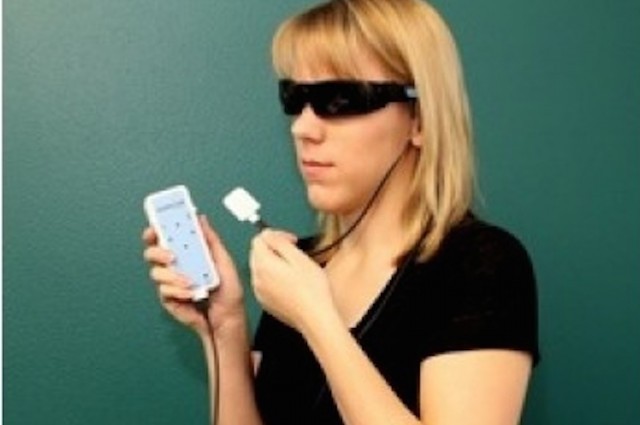The United States Food and Drug Administration (FDA) approved a new medical device for the blind on June 22, Thursday, called BrainPort V100. This gadget allows visually impaired people to "see" images by using their tongues.
Wicab. Inc., a Wisconsin-based company, invented the FDA-approved product for the blind, according to Empire State Tribune. The battery-operated BrainPort contains a tiny video camera that is attached to a pair of special glasses, and a mouthpiece powered by almost 400 electrodes.
Users of the medical tech simply place the mouthpiece onto their tongues. Then the camera collects images that are converted by electrical signals.
The signals then produce a tingling sensation with patterns that are bubble-like. This process involves converting visual images into electrical impulses, allowing users to detect the size, direction, and speed of objects in front of them.
Wicab CEO Robert Beckman said that the new tool for blind people allows them to interpret the bubble patterns or tongue stimulation as a close object. He compared using the medical device to learning a new language, according to Science World Report.
FDA reports show that 74 subjects used BrainPort. From this sample size, 69 percent could "see" things in front of them.
The new technology caused various side-effects in 69 percent of the study's participants, such as metallic taste and stinging. However, they were all minor problems.
William Maisel, an FDA chief scientist, shared that the innovative tool can help millions of people. Blind Americans can have "better" lives.
The FDA approval is for almost 250,000 blind Americans who have no light sensitivity. The price tag will be about $10,000.
After 15 years of research, in 2013 Wicab received a green light to sell BrainPort in Europe. The new medical device can now be used as a useful tool for U.S. blind individuals, who number about 1.2 million.
The National Federation of the Blind expands the definition of blindness. It not only includes people with no eyesight, but also those who need special tools in addition to corrective lenses, in order to perform everyday activities.



























